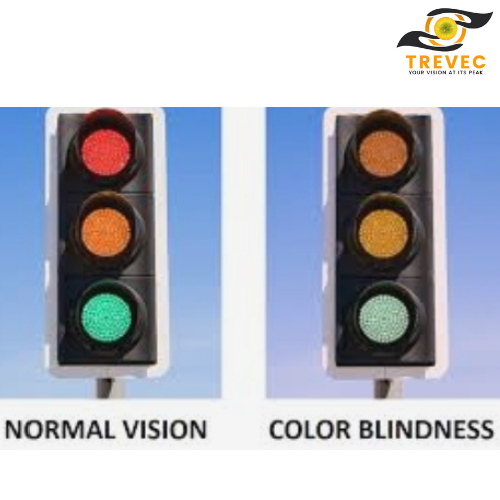In one of our recent discussions about vision for driving, a reader shared a personal experience we’d like to share, as it forms the basis of this awareness campaign.
Mr. X (name kept private for confidentiality) recounted his experience undergoing a standard vision test before obtaining his driver’s license. However, he noticed that he struggled to interpret the newly installed traffic lights at major junctions in Abuja while driving. Mr. X often relied on observing other drivers or the sound of car horns behind him to determine when the traffic lights had turned green (indicating to proceed). Mr. X was confident in his vision, stating that he had no trouble seeing objects from near and far distances. Little did he know, he was color-blind! Yes, you read that correctly – color blindness is an actual condition. Did you know that color blindness (color vision deficiency, or CVD) affects around 1 in 12 men (8%) and 1 in 200 women? It means that 1 in 12 individuals have some form of color deficiency! While color blindness is often inherited, it can also develop later in life due to medical conditions or other factors.
Have you ever heard of color blindness? If your answer is no, we aim to raise awareness about color blindness and encourage those who do not perceive colors conventionally to seek assistance and embrace their differences.
WHAT IS COLOR BLINDNESS?
Color blindness (color vision deficiency) is a relatively common condition that results in an atypical perception of colors. It occurs when the cones (nerve cells in the eye’s retina) do not function properly; these specialized nerve cells (rods and cones) play a role in vision as cones are responsible for color vision. If a person has color blindness, some cones are either absent or malfunctioning. Cones process light and images as they enter the eye and transmit signals to the brain, allowing you to perceive color.
Color blindness typically does not mean a person does not see any colors. The majority of individuals with color blindness can see a variety of colors, but they perceive some colors differently from others. They may also struggle to distinguish between specific colors or shades. In rare cases, some individuals with color blindness do not see any color.
On a lighter note, did you know that everyone perceives colors slightly differently, even those who are not color-blind?
We will conclude here, and in our next post, we will delve deeper into the topic of color blindness. Do you have any questions about color blindness? Contact TREE TOP VISION EYE CENTER (TREVEC), the best eye clinic in Utako Abuja.
TREVEC CARES!!!



One thought on “WHAT IS COLOR BLINDNESS ? (COLOR VISION DEFICIENCY)”